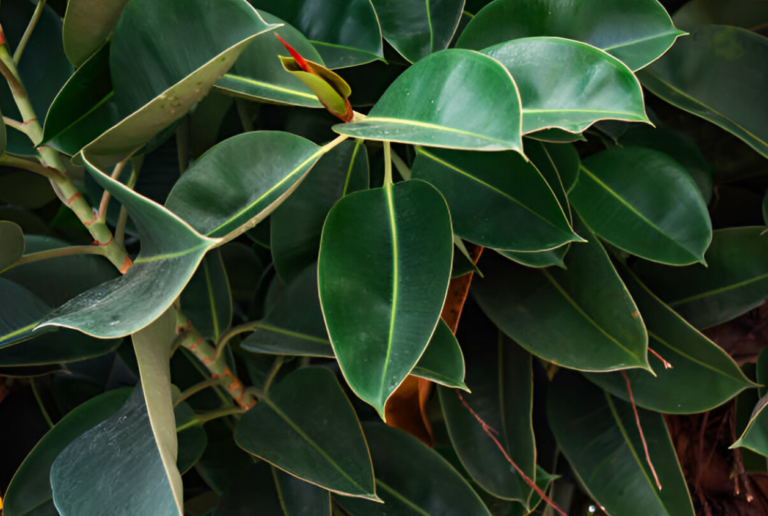The Hevea brasiliensis tree plays an essential role in both industrial and decorative settings. It is grown on plantations for latex, used in products such as tires and gloves, while varieties like Ficus elastica are popular houseplants for their aesthetic appeal. This guide covers everything from care practices to sustainable cultivation.
What Are Rubber Trees?
Native to the Amazon rainforest, the Hevea brasiliensis tree is now cultivated globally, particularly in tropical countries like Thailand and Indonesia. Indoor versions, such as the rubber plant (Ficus elastica), are also favored for home décor due to their low-maintenance care.
Moreover, these trees serve a dual purpose: providing natural rubber and adding greenery to indoor spaces. If you’re curious about similar plants, explore cactus care for other indoor gardening options.
Natural Habitat and Growing Conditions
To grow well, rubber trees require warm temperatures and high humidity. Additionally, they thrive in areas with well-draining soil and consistent rainfall. Countries like Thailand and Indonesia provide the perfect climate for these trees. Indoors, rubber plants need indirect sunlight, regular watering, and proper humidity to stay healthy.
How Latex Is Harvested from Rubber Trees
Latex extraction is a delicate process that involves tapping the tree’s bark. Consequently, the latex flows from the cut and is collected in containers. Plantation owners manage tapping cycles to ensure that the trees remain productive for decades. After harvesting, the latex is processed into products like tires, gloves, and adhesives.
- A diagonal cut is made into the bark of the tree.
- Latex flows from the cut into containers.
- Trees are tapped in cycles to avoid overharvesting.
- The latex is then processed into natural rubber.
The economic lifespan of rubber trees on plantations is typically around 32 years, with the first seven years dedicated to growth before tapping can begin.
For more insights into how natural rubber is processed and its uses in global industries, visit Michelin’s Natural Rubber Guide.
Caring for Rubber Trees Indoors
When caring for Ficus elastica, it is important to provide the right conditions. First, use a pot with good drainage and choose a bright spot with indirect light. Furthermore, allow the top inch of soil to dry before watering. If humidity is low, mist the leaves regularly to prevent dryness.
- Potting and Soil
- Use well-draining soil and ensure your pot has drainage holes.
- Repot every 1-2 years to prevent root binding.
- Light and Temperature
- Place your rubber plant in bright, indirect sunlight.
- Maintain temperatures between 60°F and 75°F.
- Watering and Humidity
- Water when the top layer of soil feels dry.
- Use a humidifier or mist the leaves to maintain moisture.
- Pruning and Fertilizing
- Prune regularly to encourage healthy growth.
- Fertilize once a month during the growing season.
For more guidance on promoting plant growth, you may find useful tips from boosting plants with manure tea.
Environmental Impact and Sustainability
Rubber plantations can lead to deforestation and biodiversity loss. However, many initiatives are promoting sustainable latex harvesting practices. Some plantations are now adopting agroforestry systems, where rubber trees are grown alongside other crops.
Discover additional ways to create a sustainable garden by burying fish scraps as natural fertilizer.
Common FAQs About Rubber Trees
How Long Do Rubber Trees Live?
In the wild, rubber trees can live over 100 years. On plantations, their productive lifespan is about 32 years.
How Fast Do Rubber Trees Grow?
Rubber trees grow quickly in tropical environments, but growth slows when they are kept indoors.
Can Rubber Trees Be Grown Indoors?
Yes, the ornamental Ficus elastica is a popular indoor plant due to its air-purifying qualities.
Conclusion
In conclusion, rubber trees are versatile plants with both industrial and ornamental value. Whether grown indoors or on plantations, they require proper care to thrive. With sustainable practices, we can ensure that rubber cultivation benefits the environment while supporting essential industries.
If you’re looking to expand your gardening knowledge, explore growing mint for another rewarding plant care experience.
